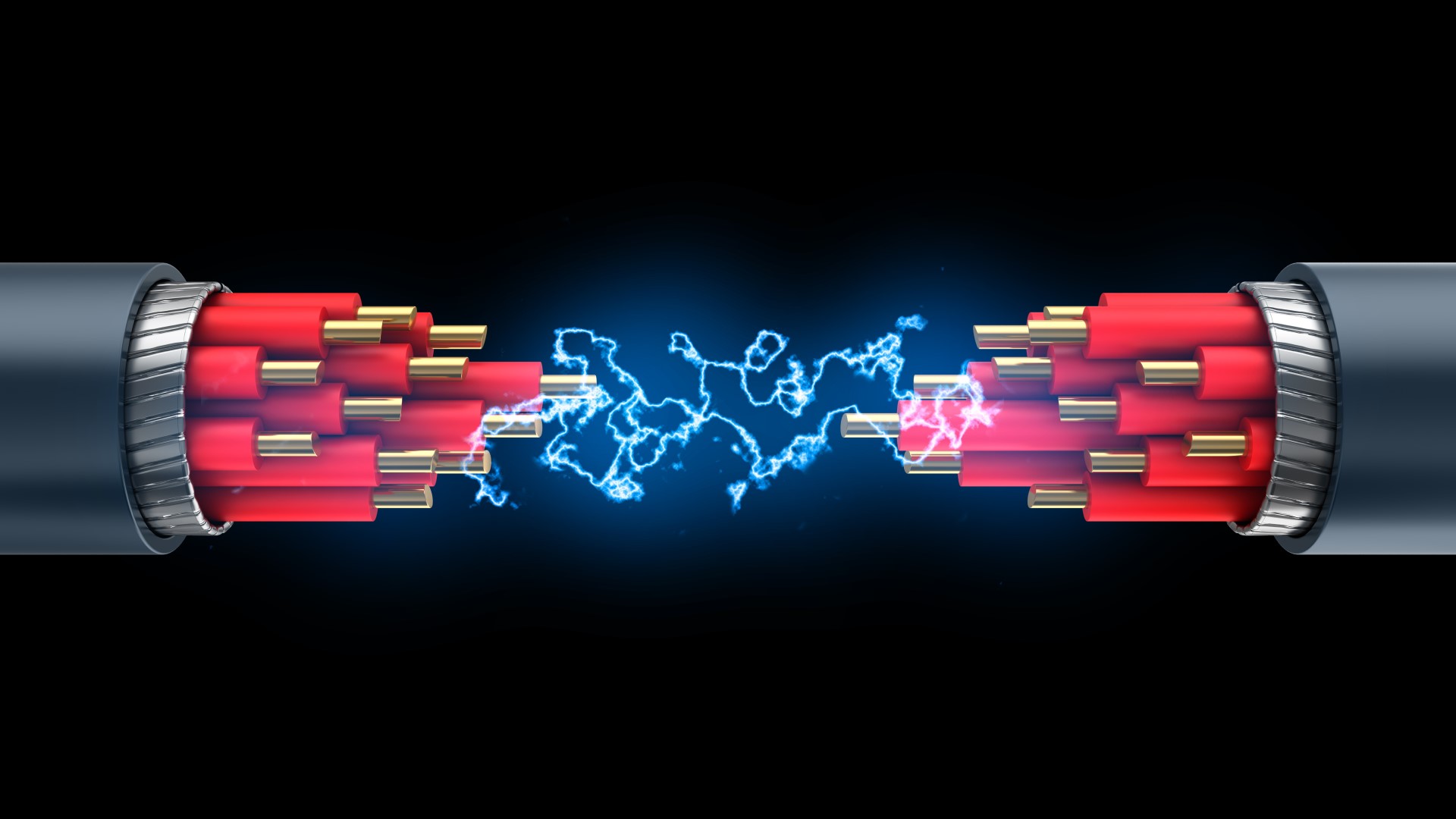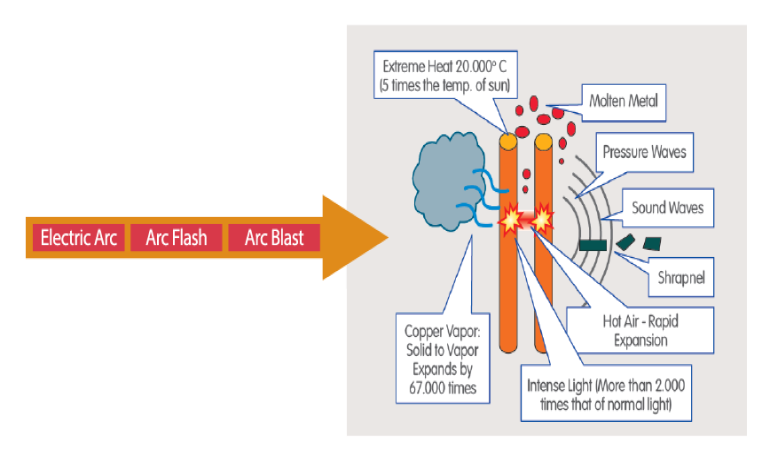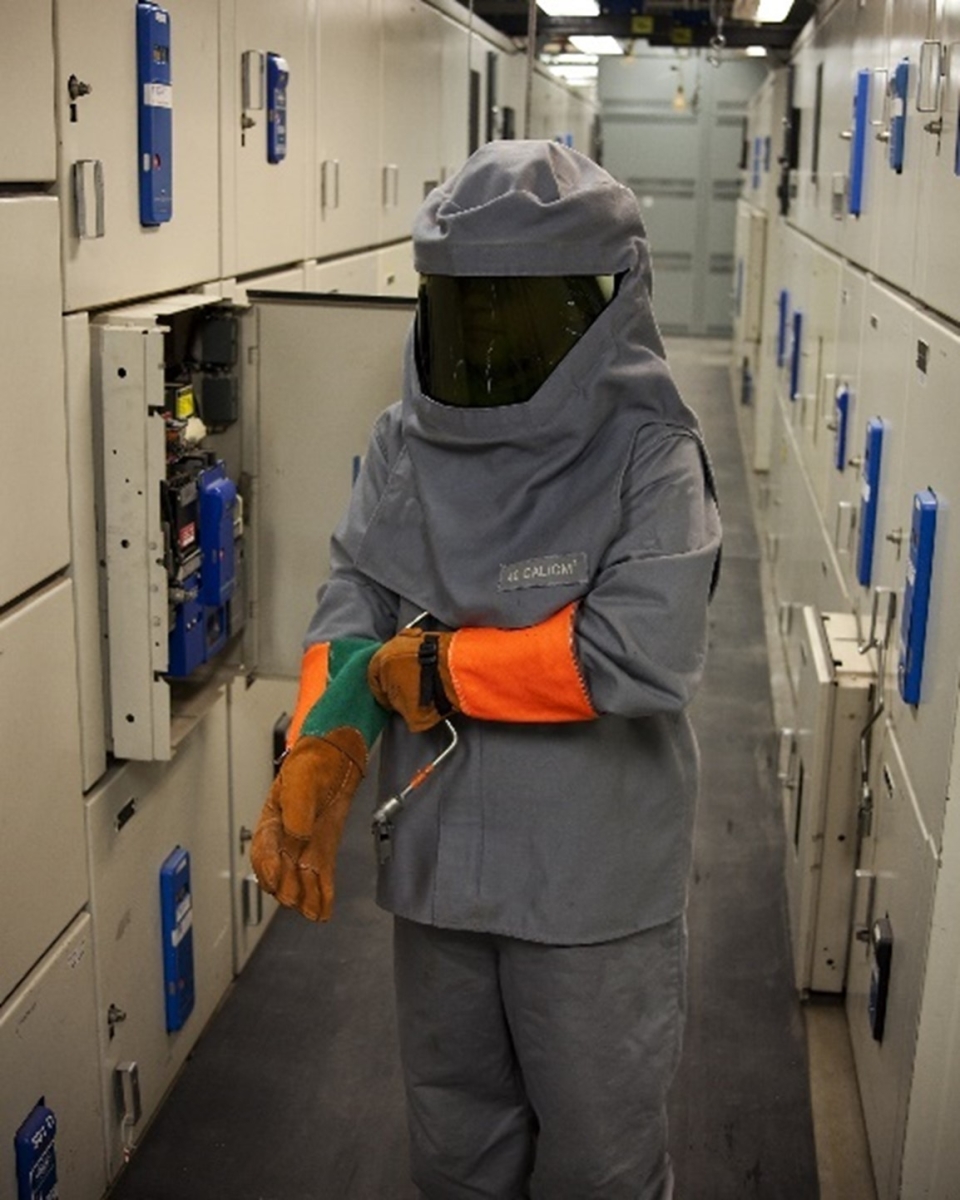Arc Flash Assessment

Arc flash is a dangerous condition associated with the release of huge amount of energy caused by an electrical arc (NFPA 70E - the relevant standard from the National Fire Protection Association)
The escalation of an Arc Flash incident comes out as an Arc Blast

Arcs can be initiated by the following:
- Glow to arc discharge:
- Dust and impurities
- Corrosion
- Condensation of vapor and dripping water can cause tracking on the surface of insulating materials.
- Spark discharge:
- Accidental contact with live exposed parts
- Dropping tools
- Over-voltages across narrow gaps between conductors of different phases
- Failure of the insulating materials.
- Improperly designed or utilized equipment.
- Improper work procedures.
- Lack of electrical safety training
The effects on the worker from such a phenomenon are multiple: severe burns, blindness, hearing loss, damage to the chest (due to the path followed by the current in the human body) and extensive injuries which together and their severity usually lead to death.
According to OSHA, when a risk of arc flash is present, the employer shall conduct an Arc Flash Risk Assessment and provide the appropriate PPE for the maintenance actions.
Industrial Safety Department of Ergonomia consists of experienced and specialized electrical engineers who conduct Arc Flash Risk Assessment and Hazard Analysis studies, providing compliance with:
- IEEE 1584: Guide for Performing Arc-Flash Hazard Calculations.
- NFPA 70E: Electrical Safety at Work
- EN 50110: Operation of electrical installations
- All relevant Regulations and Legislation valid locally

Arc Flash Assessment Services
Step 1: Site Survey
Data gathering - Validation
Step 2: Network Modelling
Build the electrical Network Computer Model with a specialized Software
Step 3: Mitigation
Reduction of Arc Energy, severity and likelihood of Arc Flash Incident
Step 4: Risk Assessment
Residual Risk Assessment, considering the severity and probability of an event to arise
Step 5: Arc Flash Hazard Labeling
Detailing Warning Labels of Hazard Risk Category and boundaries for each item under assessment
Step 6: Safety Procedures
Review and develop an integrated plan of safety and operational procedures
Step 7: Training
Enhance awareness of electrical hazards and develop a proactive safety culture to all personnel
Additional services:
- Short Circuit Study
- Coordination Study
- Electrical Panel Audits

